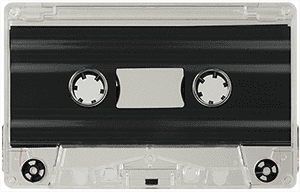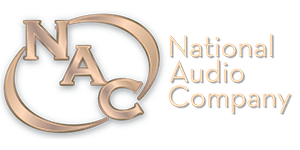Some tape types are no longer available on the world market. Chrome tape supplies have been depleted and chrome tape is not being made anymore.
National Audio Company is now manufacturing three different tapes in our facilities in Springfield, Missouri, USA. Each type fits a different need.

FERRIC TAPES: Ferric oxide Type I Normal Bias tapes.
FerroMaster C256TM is the classic ferric cassette tape you are used to. It is refined for the use in consumer cassette decks for high quality recording and playback. No custom biasing is necessary.
FerroMaster C456TM is the highest quality ferric cassette tape available in the world today. This product has been tested in high-speed duplication equipment and delivers outstanding quality for the recording industry duplication orders that NAC produces in house daily.
FerroMaster C456TM is an ultra-high performance Type I cassette tape delivering the highest signal-to-noise ratio (head room) ever achieved by a ferric cassette tape and is created with the finest magnetic recording oxide ever discovered. With custom bias settings it delivers the high output and frequency response previously available only in the best type II tapes. It is designed to be recorded at very high levels and provides deep, mellow bass, warm mid-range, and crystal clear high frequencies. Test results and specifications for the product have been finalized and are available for consumers and audio pros. (Note: professional bias adjustment is necessary for the best results with C456.)
COBALT TAPES: Cobalt oxide Type II High Bias tapes.
FerroMaster C756TM is a high bias tape for the most demanding recording applications, C756 sets the gold standard in Type II performance. Cobalt oxide combines outstanding output and low distortion providing unmatched musical clarity.
This tape now being made at NAC delivers up to 4db more output than earlier Type II tapes without saturation or distortion. (Specification is for +2 db over biasing at 6.3 kHz. 20 db below reference level. Record Equalization — For optimum performance, record equalization should be set after biasing as the oxide in this tape responds somewhat differently due to its high performance characteristics.) Our Studio Master 799 packaged Type II cassettes are the same Cobalt tape as Ferromaster C756.
CHROME TAPE: There is no chrome tape remaining at National Audio, and it is no longer manufactured anywhere in the World. NAC’s FerroMaster C456TM offers a comparable dynamic range when duplicated professionally, and we sell pancakes of tape for that purpose.
Use of Dolby Encoding
Dolby encoding of audio is intended to reduce the tape noise on the copied tapes, while leaving the original audio unchanged. Dolby encoding does not fix the sound of the master. Dolby is not recommended on duplication projects unless you are sure the listeners will have Dolby settings on their playback equipment.
 Here’s how Dolby works. The original master is run through a Dolby encoder that basically boosts the upper frequencies while the audio is quiet, and doesn’t boost as much when the audio is loud (relative to a set threshold). The copy tapes are duplicated with this encoding of shifted frequencies; and when played back in a deck with Dolby B engaged, the decoder reverses the boosts that were added to the original audio by the Dolby encoder according to the program levels that it senses. The result should be that the original audio sounds unchanged, but the tape noise (most noticeable in the higher frequencies) of the copy tapes has been reduced by almost 10db.
Here’s how Dolby works. The original master is run through a Dolby encoder that basically boosts the upper frequencies while the audio is quiet, and doesn’t boost as much when the audio is loud (relative to a set threshold). The copy tapes are duplicated with this encoding of shifted frequencies; and when played back in a deck with Dolby B engaged, the decoder reverses the boosts that were added to the original audio by the Dolby encoder according to the program levels that it senses. The result should be that the original audio sounds unchanged, but the tape noise (most noticeable in the higher frequencies) of the copy tapes has been reduced by almost 10db.
Our sound engineers may be able to repair or improve imperfect masters. Contact Customer Service for more information on these services.

